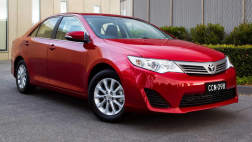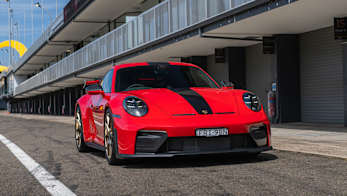The latest generation of grand prix cars are petrol-electric hybrids that also use a range of high-tech systems and technologies, right down to long-life oils, that will eventually find their way into everyday road cars.
An F1 hybrid is very different from a Toyota Prius, since braking energy is stored and released for a burst of speed and not for low-speed electric driving, but the work done on high-tech batteries and computer control systems is easily transferred to production line heroes.
It's typical of grand prix technology transfer, which has been a reality in racing for decades. Still, it's ironic that some of the most advanced safety features in road cars - ABS brakes and ESP stability control - are banned from Formula One and there is no way yet to adapt airbags to the violent and unpredictable crashes in grand prix races.
Tracing the F1 roots of today's road cars is relatively easy, starting with engine and gearbox technology from the 1990s. Honda developed and refined the V-Tech adjustable camshaft timing that combines power and economy in racing and Ferrari led the world into the era of robotised manu-matic gearboxes.
"V-Tech technology came directly from Formula One. At the time it was new to the Honda V10 engine used by McLaren, but now it's on every road going Honda car, right down to our economy cars and hybrids," says Mark Higgins of Honda Australia.
Current F1 cars used gearboxes which have a 'seamless shift' system that's similar to the double-clutch gearboxes fitted to growing number of cars, including the Volkswagen Golf. Aerodynamics and high-tech materials are two other important areas.
Carbon fibre is starting to find its way into top-end sports cars, including the Lexus LF-A supercar, after being adapted from aerospace to racing. McLaren was the first to do the job and now the ultra- strong composite is universally used in F1 and being adapted to lightweight city cars of the future.
A range of other 'on the aero' front, this year's grand prix cars have a driver-adjustable rear wing - a long way ahead of the 1950s 'air brake' used by Mercedes-Benz at Le Mans - and that technology is coming fast for road cars.
Ferrari has aerofoils in the nose of its latest 458 Italia that change shape at various speeds to assist cooling and downforce. In future, 'active' aero systems will blank the front ends of road cars at speeds to cut drag and improve fuel economy - then open again for cooling when the car is stopped in traffic. This sort of work is also made easier by the complex artificial wind tunnels contained in F1 computers - the programs are called Computational Fluid Dynamics - used to test and develop new body parts.
Ford recently credited CFD work on the upcoming Ranger pickup and almost every major maker uses CFD for early design and development work. Even F1 fuels and oils are used for road car work, with Shell trumpeting the V-Power development it did with Ferrari before introducing its current flagship fuel. And it has used grand prix engines for decades to test the oils which now allow road cars to run for more than 10,000 kilometres between changes.













.jpg)

.jpg)



.jpg)

.jpg)







.jpg)
